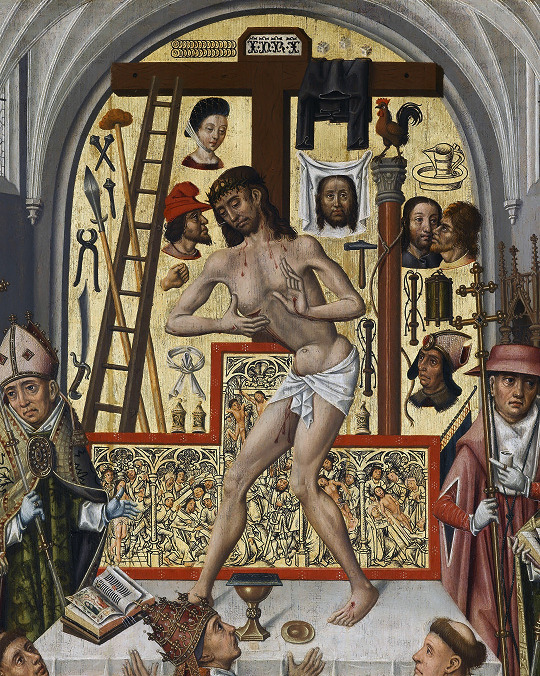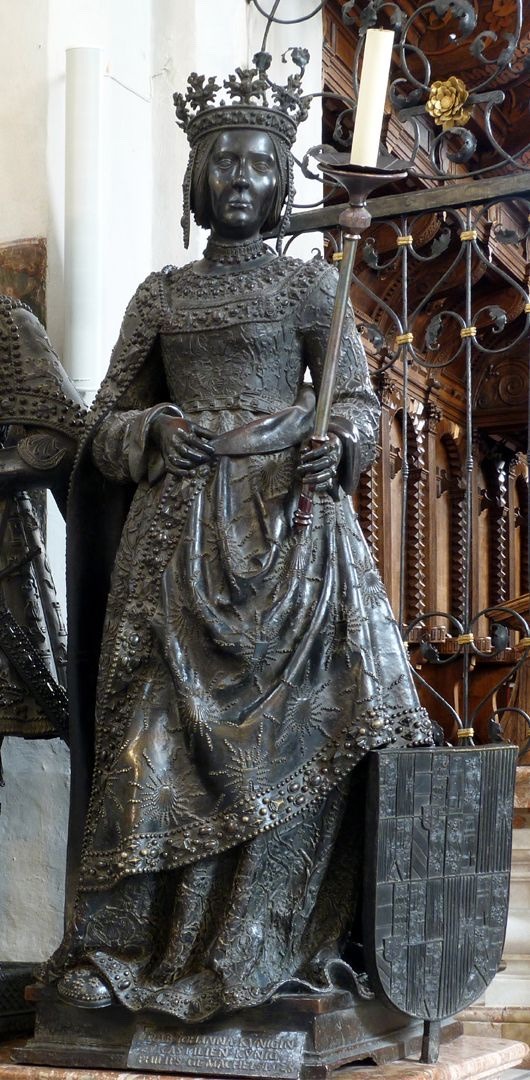#sixteenth century
Text

Reference drawing of Juana I of Castile for the Tomb of Maximillian I by Jörg Kölderer (1522)
#peep the little pomegranate🥹#juana i of castile#juana of castile#joanna of castile#juana la loca#maximilian i#art#art history#history of art#drawing#northern renaissance art#northern renaissance#renaissance art#renaissance#renaissance history#16th century art#16th century#sixteenth century#16th century fashion#1500s#history#holy roman empire#holy roman emperor#tomb#early modern#flemish art#Flanders#netherlands#netherlandish art#austrian art
348 notes
·
View notes
Text

Lavinia Fontana (Italian, 1552 - 1614): Portrait of a Pregnant Woman, Possibly a Self-Portrait (via Sotheby's)
#Lavinia Fontana#women artists#women painters#art#painting#sixteenth century#seventeenth century#early women painters#early women artists#self portrait#italian painters
193 notes
·
View notes
Photo

Source details and larger version.
Here's my seasonal collection of vintage (mostly weird) fashion.
111 notes
·
View notes
Text

#wronghands#webcomic#humor#john atkinson#history#sixteenth century#witches#grammar#wordplay#phonics#homophones#spelling#witchcraft
111 notes
·
View notes
Text
🃏 ⤷ Twelfth Night Characters, Lines and Scene Numbers

Thought this table was pretty cool, so I copied it up onto Google Sheets to post here! :)
(Sir Toby above everyone in BOTH his amount of lines and his amount of scenes...as he should be though to be fair, what a cool guy)
(also I linked the source I got it from in the ID! ✨)
#twelfth night#what you will#william shakespeare#shakespeare#1500s#sixteenth century#16th century#1600s#seventeenth century#17th century#comedy#romantic comedy#english literature#feste#sir toby#maria#viola#sir andrew#twelfth night celebrations#christmas#cesario#sebastian#malvolio#olivia#orsino#fabian#curio#valentine#festethejester
22 notes
·
View notes
Photo

The Pit and the Pendulum (1961)
by Roger Corman
383 notes
·
View notes
Text

New in the Digital Library: this grant for Lyme Regis was formally issued on 14 June, 1554 and is signed "Marye the quene."
A grant of a weekly Friday market and two annual fairs to Lyme Regis. Queen Mary gives a warrant to an unidentified official to draw up the grant for the town of ’Kings Lyme’ [Lyme Regis] of a weekly Friday market and two annual three-day fairs in February and September: the grants to include all stallage, piccage [a fee for breaking ground at a fair], tollage and customs with the court of piepowder [a special tribunal for actions during the market or fair], as well as the right of correcting weights and measures; those attending the fairs may not be ’suyd arrested or molested in any suyte ... except it be for acc[i]ons and suyts onely rysyng... w[i]t[h]in the seid Fayers’. ’Where at the humble suyte and peticion of the Burgesses of our Towne of Kings Lyme in our Countie of Dorsett, we are right welle contented and pleaced ... to give and graunte unto the Burgesses of our seid Towne and to their Successours forev[er] one m[ar]kett to be kepte weekely w[ith]in our seid Towne on the Friday forev[er], And also t[w]o Fayres yerely there to be holden and kept, that is to say thone Fayre to begynne the firste day of February yerely forev[er], And there to conynue three dayes then next folowyng, And thother Fayre to begynne the xx [20th] day of September yerely and there to continue for three days then next folowyng’.
(via Grant of weekly market and two annual fairs... | MU Digital Library, University of Missouri)
#english history#british history#mary tudor#queen mary i#1500s#sixteenth century#secretary hand#manuscript#manuscripts#special collections#libraries#university of missouri#mizzou#fb#private collection#kelli h
38 notes
·
View notes
Text

Central panel from a triptych depicting the Mass of Saint Gregory, Netherlands, ca. 1500.
19 notes
·
View notes
Text
youtube
I got inspired by the recently released images from Firebrand to make a whole video about the French Hood! Iconic, classic, and oh so difficult for costume designers to get right.
#period fashion#historical fashion#period drama#tudor fashion#sixteenth century#historical costume#french hood#the tudors#reign#anne boleyn#the spanish princess#becoming elizabeth#blood sex and royalty#wolf hall#the other boleyn girl#nitpicking and i know it#Youtube
7 notes
·
View notes
Text

"Got milk?"
2 notes
·
View notes
Text


Bronze statues of Juana I of Castile and Archduchess Margaret of Austria in the Empty Tomb of Emperor Maximillian I
#juana of castile#juana i of castile#joanna of castile#Joanna I of Castile#Margaret of Austria#tomb#art#bronze sculpture#bronze statue#northern renaissance art#northern renaissance#renaissance art#renaissance#sixteenth century#16th century art#16th century#art history#history of art#maximilian i#holy roman empire#holy roman emperor
79 notes
·
View notes
Text

Barbara Longhi (Italian, 1552-1638): Saint Justina of Padua (via Dorotheum)
#Barbara Longhi#Saint Justina of Padua#early women painters#early women artists#sixteenth century#seventeenth century#italian painters#religious art#women artists#women painters#art#painting
142 notes
·
View notes
Text
My lesbian great aunt showed me what immediately became one of my favorite films ever and a comfort show.
Dangerous Beauty, released in 1998 is based on a real person- Veronica Franco, a sixteenth century courtesan in Venice.
She is a new icon of mine. I would pray to this woman
Please watch it it's incredible
#i wish i was a courtesan.#thats what i want right there#its just so beautiful#so powerful#Veronica franco is a goddess and a badass and i am so gay for her#so gay#and a little gay for marco but mostly just angry and grumpy for wasting so much of the time they could have had#dangerous beauty#Veronica franco#courtesan#sixteenth century#venice
3 notes
·
View notes
Text

#croquis#dessin#bande dessinée#noir et blanc#renaissance#16ième siècle#bretteur#épeiste#cape et d'épée#duel#sketch#drawing#comics#black and white#swordman#swordfight#sixteenth century#histoire#history#artists on tumblr#historical costume#costume historique
12 notes
·
View notes
Text
🃏 ⤷ "Look like th' innocent / flower, / But be the serpent under 't." [Macbeth 1.5.76-78]
#shakespeare qotd#shakespeare quote of the day#william shakespeare#shakespeare#1500s#sixteenth century#16th century#1600s#seventeenth century#17th century#tragedy#english literature#festethejester#macbeth#lady macbeth
12 notes
·
View notes
Text
Arthurian symbolism utilized by King Henry VIII in Habsburg diplomacy was a tribute to his esteemed mythic forefather, King Arthur, who commanded great respect from countless individuals, not least his imperial cousins. This article proposes that the King Arthur pageant at the 1522 London entry of Charles V was part of Henry’s broader use of Arthuriana in Habsburg political theatre, inspired by Maximilian I’s pseudo-ancestry. This article provides a new insight into Henry’s attempts to engage in the power politics of early sixteenth-century Europe and the use of British history in forging connections with his political rival.
1 note
·
View note